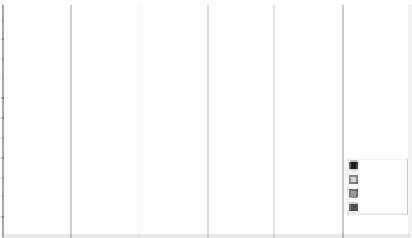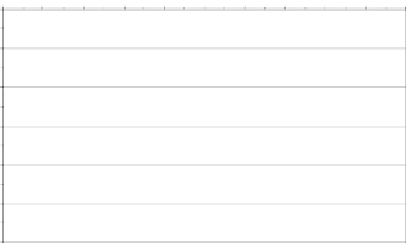Environmental Engineering Reference
In-Depth Information
1
2
3
4
5
6
7
8
9
10
11
12
0
-2
-4
-6
-8
1m - Exc.
2m - Exc.
1m - Emb.
2m - Emb.
-10
-12
-14
0
38
76
114
152
190
228
266
304
342
380
418
Total Excavation (m)
0
2
4
6
8
10
12
Axial Force (ton.)
Obs. A0
Obs. B0
Obs. C0
3D-A0
3D-B0
3D-C0
Figure 18.
axial force diagram for the rockbolts.
Figure 20. evolution of vertical displacements (exten-
someter 0—profile P4) with time.
Distance to the Axis of the Cavern (m)
-50
-40
-30
-20
-10
0
10
20
30
40
50
0
-1
0
-2
-2
-3
-4
-6
-4
-8
-5
Observed
3D Calculation
-10
0
38
76
114
152
190
228
266
304
342
380
418
-6
Total Excavation (m)
Obs. A2
Obs. B2
Obs. C2
3D-A2
3D-B2
3D-C2
Figure 19.
surface settlement profile—Profile P2.
Figure 21. evolution of the vertical displacements
(extensometer 2—profile P4) with time.
in Figure 18 the result of one of these studies is
shown for the two models. it can be concluded that
if the rockbolt's spacing is changed from 1 to 2 m,
the axial force becomes larger, but still far from the
mobilized forces are equivalent in both models,
mainly in the upper levels. in the lower levels, the
excavation model originates larger values.
From the economical and structural point of
view, this parametric study allowed to achieve an
optimal solution for the bolt mesh.
those that have been observed (the latter ones are
only a bit larger).
Figures 20 and 21 shows the evolution of the verti-
cal displacements for two distinct points of profile P4.
at the axis (extensometer 0), the vertical displace-
ments predicted by the calculation are smaller than
the observed values. in extensometer 2, points B and
c, the opposite occurs and the calculated displace-
ments are larger. The biggest difference is found in
point a, located at the surface, where the measured
displacement was very large, especially when com-
pared with the points at greater depths.
Finally, in Figure 22, the horizontal displace-
ments recorded by the inclinometers located at
profile P4 are compared with the results of the 3D
numerical modelling.
in Figure 22, the transverse horizontal displace-
ment (x direction) are shown and good agreement
between the calculations and the measured values
can be seen, especially in the excavation zone where
a maximum displacement of 6,0 mm was obtained,
against the 5,5 mm predicted by the numerical
modelling.
The horizontal displacements in the longitu-
dinal direction returned by the calculations were
very small and in Figure 22 it is shown that they
5
coMPaRison BeTWeen The
PReDicTeD anD oBseRVeD ResUlTs
as shown in the previous sections, no relevant
differences between the two models were found
and so the comparisons will only regard the
observation data and the results given by the
embankment model.
Figures 19 to 21show both the vertical displace-
ments yielded by the 3D calculation and the obser-
vation data from two profiles (P2 and P4).
The first figure has the results for profile P2.
it can be concluded that the final displacements
estimated by the numerical analysis agree well with





















































































































































































































































































































































































































































